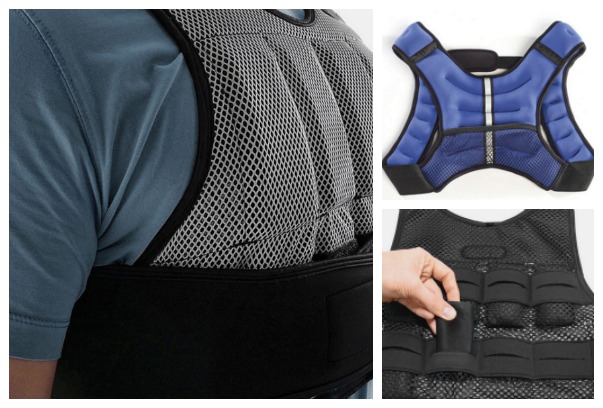Running with a forefoot strike makes you run faster, which is why its good for performance. Just look at most elite runners, they all land on their forefoot when they run.
Using a weight vest during your training runs also does an outstanding job of boosting endurance and neuromuscular performance because its an excellent form of strength and resistant training.
Using a Weight Vest Running Boosts Running Performance
A great idea for resistance training for forefoot running is to wear a weighted vest, especially during warm-up runs, because it helps you build more leg strength and improves your endurance capacity.
A recent study by Barnes et al. found that well-trained distance runners who wore a weighted vest during warm-up runs showed improvements in running performance.
- In their study, the runners were asked to wear a weighted vest equivalent to 20% of their body mass and ran for 5 minutes at sub-maximal effort followed by an incremental speed increase by 1 km/h every minute until exhaustion.
- The runners then performed 6 – 10 x 1500 m slightly above race pace while a weighted vest was worn.
The results showed that weighted vest training improved running performance by 3%, which is enough to improve race time, and the effects of the weighted vest was substantially greater than traditional warm-ups such as high-intensity warm-ups and stretching.
And finally, the researchers found that the weighted vest induced positive changes in leg stiffness (or leg spring) –greater leg stiffness means the leg is better able to store more elastic strain energy during running. Therefore, wearing a weighted vest during your warm up runs is not only ideal metabolically, but kinematically as well.

More From Run Forefoot:
Runners Knee – Find out why landing with a heel strike while you run may eventually give you osteoarthritic knees.
Calf Pain After Forefoot Running – Understand why calf pain arises in forefoot running and that it is only temporary.
Barefoot Running Shoes Review – Check out my review on the Invo-8 Bare-XF 210 and why I believe they are great for forefoot running.
Low Back Pain – Learn how to reduce loading on the lumbar spine when you run.
Why Try Running Barefoot – Find out why every time you run barefoot, your leg mechanics become more efficient.
References:
Barnes et al. Warm-up with weighted vest improves running performance via leg stiffness and running economy. J Sci Med Sport, 2015; 18,103-108.
Dalleau et al. The spring-mass model and the energy cost of treadmill running. Eur J Appl Physiol, 1998; 77,257-63.
Ferris DP, Liang K, Farley CT. Runners adjust for their leg stiffness on a new running surface. J Biomech, 1999; 32, 787-94.
Ingham, SA., Fudge, BW and Pringle, JS. Improvement of 800 m running performance with the prior high-intensity exercise. Int J Sports Physiol Perform, 2013;8, 77-83.
Spurrs RW., Murphy AJ and Watsford ML. The effects of plyometric training on distance running performance. Eur J Appl Physiol, 2003, 89:1-7.
Bretta Riches
BSc Neurobiology; MSc Biomechanics candidate, ultra minimalist runner & founder of RunForefoot. I was a heel striker, always injured. I was inspired by the great Tirunesh Dibaba to try forefoot running. Now, I'm injury free. This is why I launched Run Forefoot, to advocate the health & performance benefits of forefoot running and to raise awareness on the dangers of heel striking, because the world needs to know.
Latest posts by Bretta Riches (see all)
- Can You Run In Barefoot Shoes? Yes, But DON’T Heel Strike! - 21/07/2024
- Why Cushioned Running Shoes Are Really Bad for Your Feet - 19/07/2024
- Do Cushioned Running Shoes Cause Injuries? - 17/07/2024


Leave a Reply